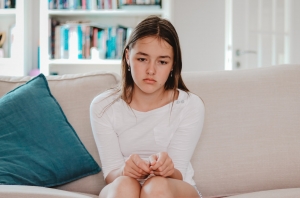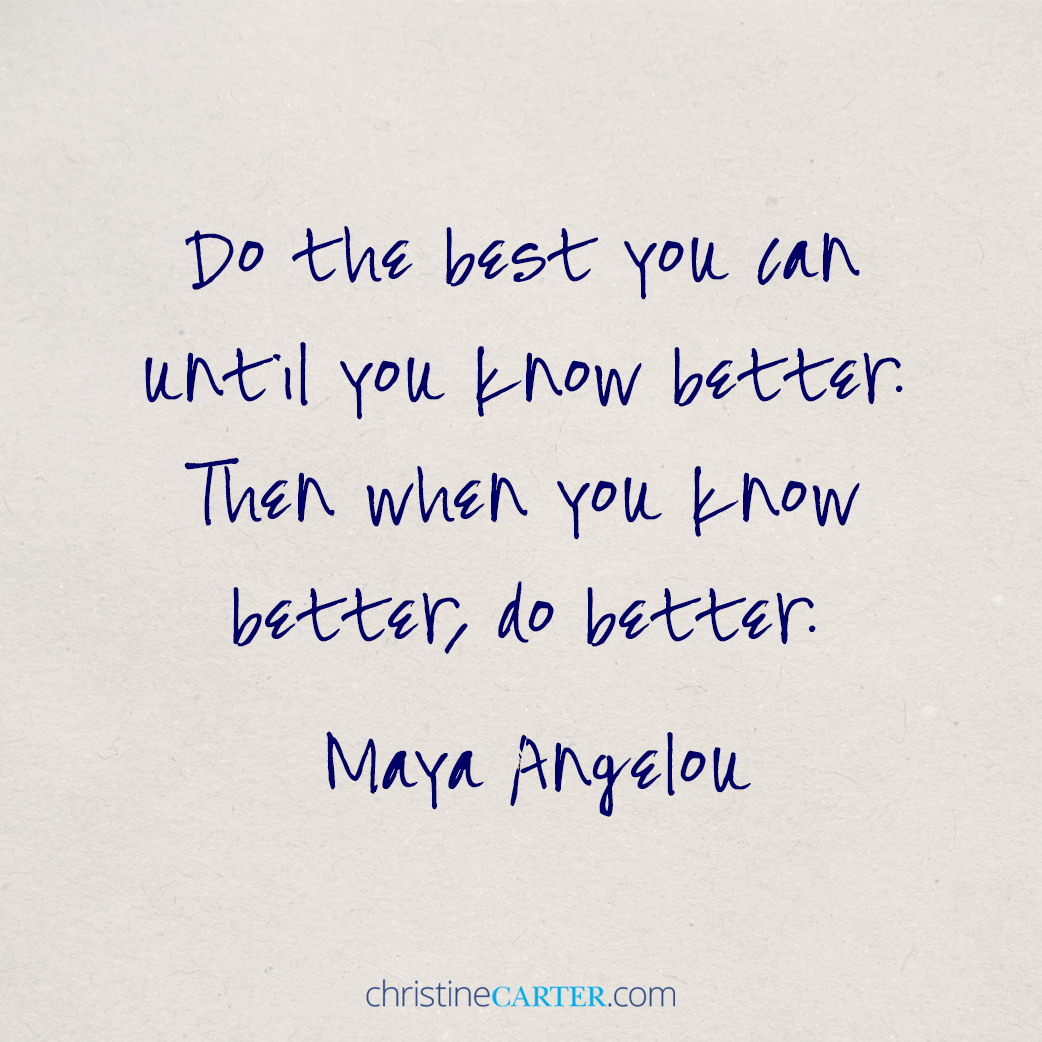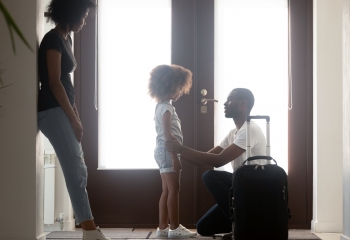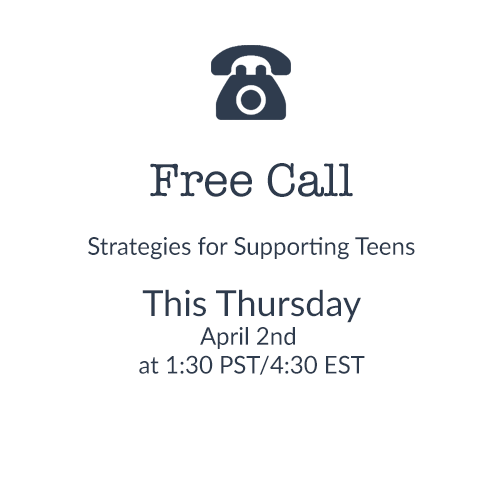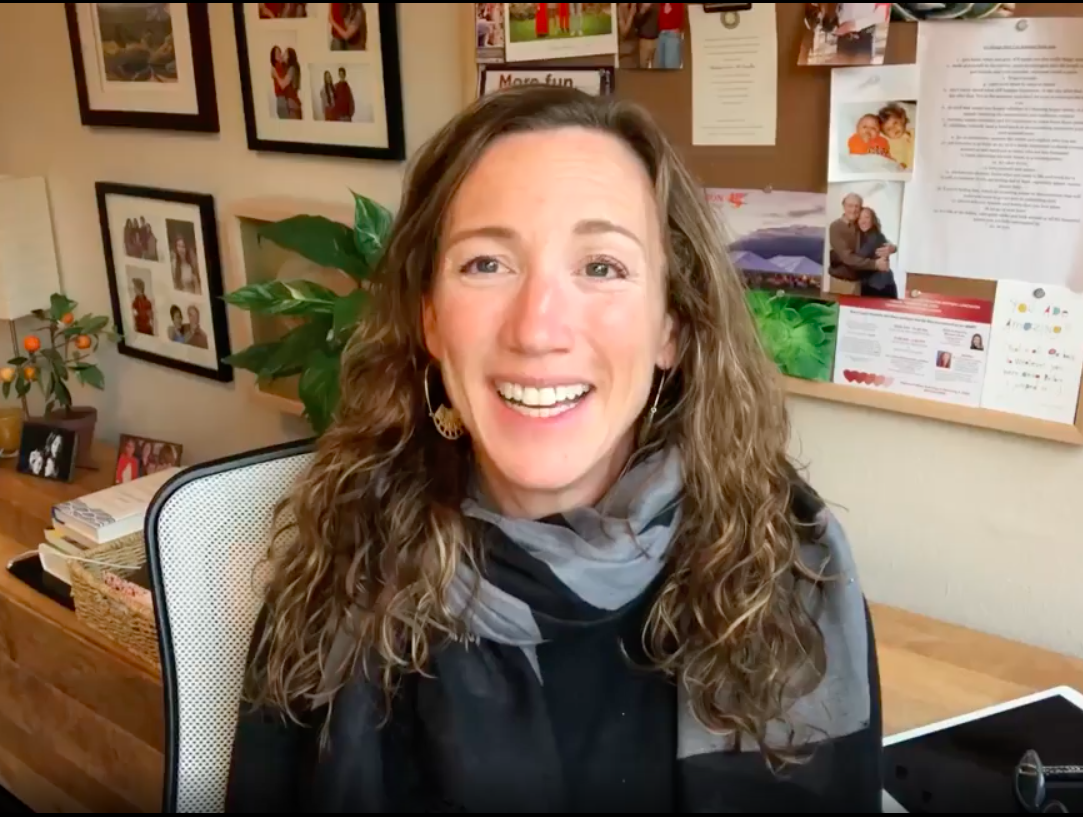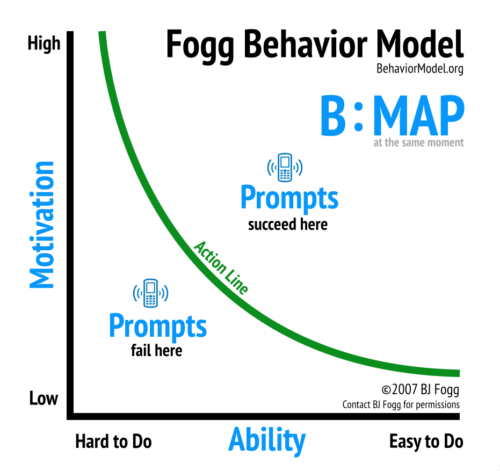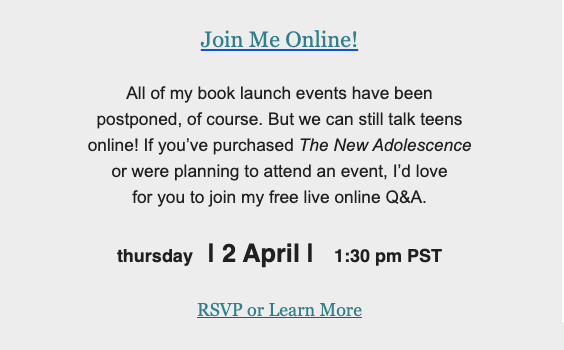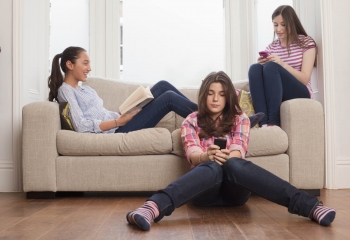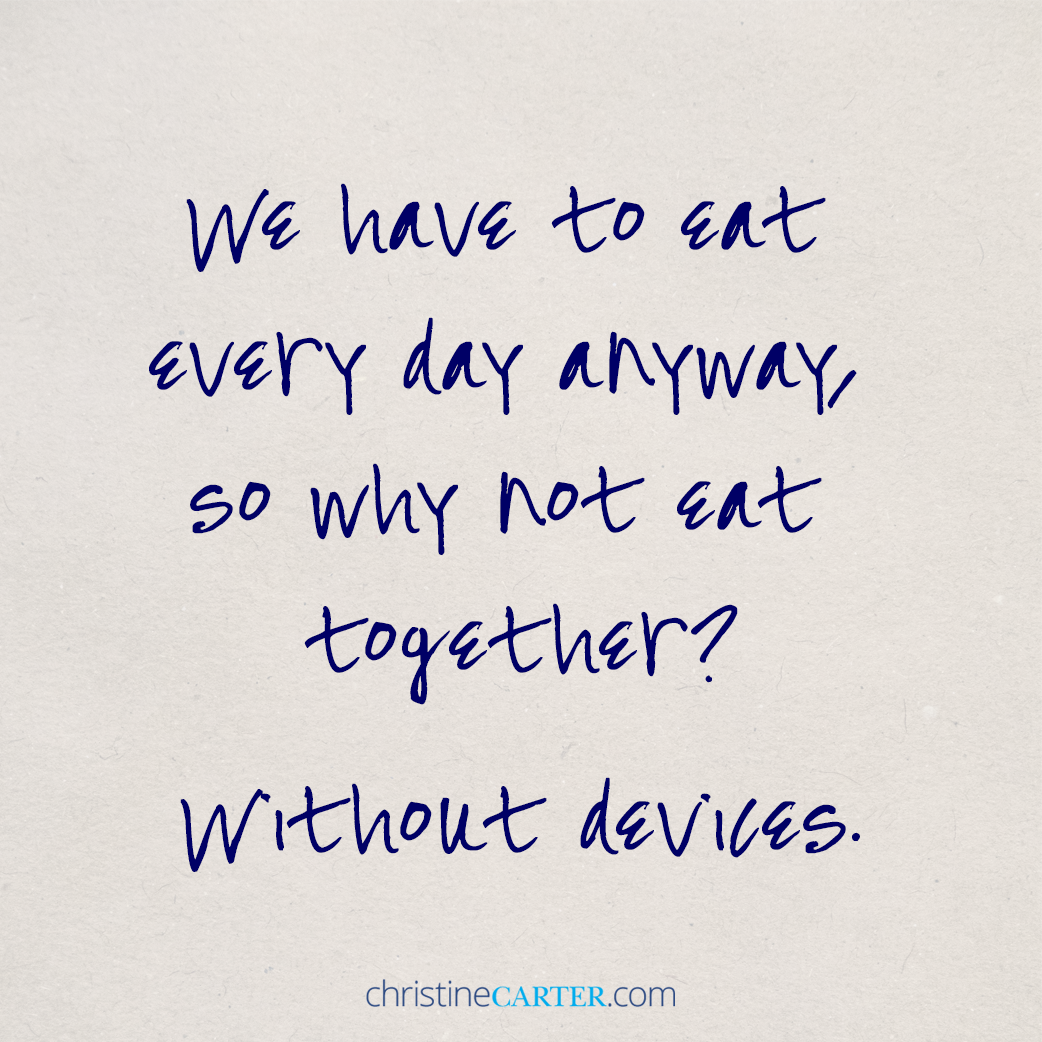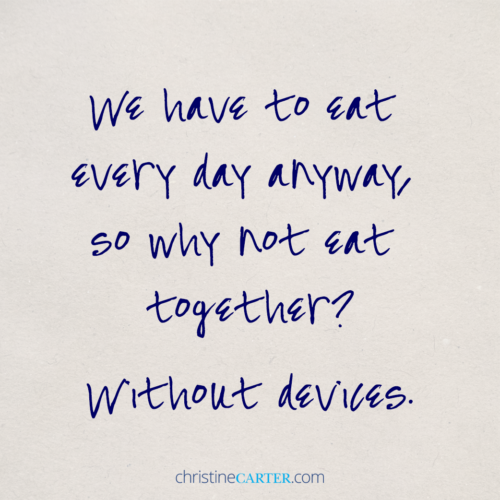Losing these ceremonies is a big deal. We need to help them grieve.
Yesterday at dinner, one of my children was sad and irritated. She was offended by our mere existence.
“What’s wrong with her now?” one of the other kids asked unkindly, to no one in particular.
Like many young people around the world, this is a kid who has weathered some deep disappointments in the last month. She was studying at an art school, a once-in-a-lifetime semester program, when COVID-19 hit. Classes aren’t the same when you don’t have the materials, studio, and equipment you need for printmaking, sculpture, and developing your film.
And it turned out that my irritable art student had just been dealt a new disappointment: Her first real art show had been canceled. There’d be no way for her to demonstrate to her friends and family that she’s crossed over from being a creative little kid who liked art into a full-fledged, real-life artist. Her identity is different now than it was a year ago, a fact that would have been made concrete with a gallery opening and show. That rite of passage would have allowed us to better see her as she now sees herself.
Modern society has precious few rituals and rites of passage to mark kids’ journey through adolescence. The ceremonies and celebrations we do have are often in the spring. Performances and proms, championships and final projects all showcase growth and learning and accomplishment. And, of course, there is graduation.
These important ceremonies that say “Look at you! You are growing up! We are so proud of you!” have been canceled, leaving kids with no closure. Rites of passage have vanished into thin air. Even as they feel grateful for their health, and sorry that the world is suffering in the way that it is, Generation Z feels cheated. Their losses are tangible to them. And so they are grieving.
My daughter’s sadness and frustration—indeed her loss—has been hard for me to witness. I want to fix it. And yet I know I cannot. Here are some things that we parents can do.
1. Acknowledge their loss
Some “stepping up” ceremonies are so abstract (and, I’ll just say it, tedious for their audiences) that their importance for our kids doesn’t always register with us adults.
It’s true that their disappointment about not going to prom or having graduation is trifling compared to the tragedies that thousands of families are facing right now. Many people have lost family members who they didn’t get to say goodbye to, loved ones who died alone and terrified in an ICU.
And it’s also true that our kids’ losses and their resulting grief is real. Most of them don’t have the life experience that would help them put something like a canceled prom into perspective. Discounting their very real frustration and sadness will only make them feel worse. We adults can help them feel better by acknowledging both their losses, and also their feelings about the loss.
Empathy is powerful medicine.
2. Name their feelings
If you are raising or teaching teenagers, you already know that adolescents experience their emotions much more intensely than adults. This is normal and appropriate—and it can be distressing to us as adults. To be truly empathic, we need to listen without trying to fix or take away their grief. “I feel so FRUSTRATED!” my art school kid said before bursting into tears. “Looks like you are also feeling really sad,” I replied, pulling her in for a hug.
Helping kids identify what they are feeling can, ironically, ease their pain. This is the “name it to tame it” technique. Research shows that when we label our emotions, we are better able to integrate them. If your adolescent starts telling you a story about an imagined future—perhaps bringing up worst-case scenarios in which they aren’t able to go off to college—gently bring them back to what they are feeling right now, about the current disappointment.
See if you can demonstrate that you appreciate their difficult feelings in a simple phrase or two. For example, “I understand that you are super sad that your first real art show was canceled. And you’re mad that every day seems to bring a new frustration and disappointment.” Then, throw in a little empathy: “That’s just plain hard. I totally get why you are angry and sad.”
3. Teach them about grief
You may recognize that your teenager is grieving, but your teenager probably doesn’t. Though Elisabeth Kübler-Ross’s seminal work on grief was originally about the way that we cope with death and dying (which is, unfortunately, relevant to many people as they lose family members to the coronavirus), her later work with David Kessler is relevant to more common losses, like canceled proms and graduations.
There is power in naming what teens are experiencing as grief; it helps them acknowledge and validate their own experience. Kübler-Ross and Kessler detailed five “stages” of grief. Because we don’t often progress through these stages in a linear way, I think of these as five typical human experiences we tend to have when we endure a loss. They are:
- Denial: Many teens are denying the threat of the coronavirus, both the danger of their exposure to it and their ability to spread it.
- Anger: Teens are clearly frustrated by having to stay at home. They are angry that we adults are keeping them from their friends. Many are furious—with President Trump and the Centers for Disease Control and the ways that this pandemic continues to be mishandled. Notably, adolescent anger is often misdirected. Teens who are mad about what is happening in the world often take it out on their parents and pick fights with their siblings.
- Bargaining: Desperately hoping to avoid a key cause of grief—loss of social contact with their peers—many teens are negotiating hard to see their friends.
- Depression: Kids are sad about their losses. In addition, they feel lonely and isolated. Prolonged sadness and loneliness can snowball into depression. Depressed teens often have a hard time getting out of bed in the morning (and an equally hard time getting to sleep at night). They may spend more time alone in their rooms or show up at meals sullen and mournful.
- Acceptance: Teens who’ve gotten themselves to acceptance understand that this too shall pass; they see the futility of resisting a global pandemic. Their emotions stabilize, and they start to experience the calm that comes from accepting what they cannot change. They regain a sense of control by maintaining social distancing.
We adults can’t deliver teens straight to acceptance, but we can try to model it. By accepting these challenging circumstances—and also by accepting our own and our teens’ feelings—we can bring a calm acceptance to our household.
4. Help them find meaning
Kessler has continued the work on grief that he started with Kübler-Ross, recently adding a sixth stage: meaning. Meaning comes from the light we find in dark times. It might come from the gratitude we feel for our family or a sense of awe that overcomes us on a hike. And, often, meaning comes from helping others.
Again and again, research has shown that even in dire circumstances we feel better when we turn our attention to supporting others. This is true for teenagers, as well. It’s not surprising that teens who provide tangible, emotional, or informational support to people in crises tend to feel more strongly connected to their community. They cope with their own challenges more effectively, and they feel more supported by others.
As we approach what is likely to be a long summer for our kids—mine all had jobs and plans that are now in question—we can ask them: How can you be helpful to others during this time? How can you channel your frustration and anger? Our questions may or may not spark something in them. They may not be ready or able to find meaning.
Whether or not they see it now, meaning will likely come from simply enduring this difficult time. These kids—even the full-grown ones who are now living with us again—are getting a crash course in dealing with discomfort and disappointment.
While it’s true that a joyful life comes from positive emotions, it also comes from resilience—from having the tools needed to cope with life’s inevitable difficulties and painful moments. The silver lining for this generation is that, like it or not, they are gaining the skills they need to cope with difficulty. Fortunately, these are skills that will serve them for the rest of their lives.

